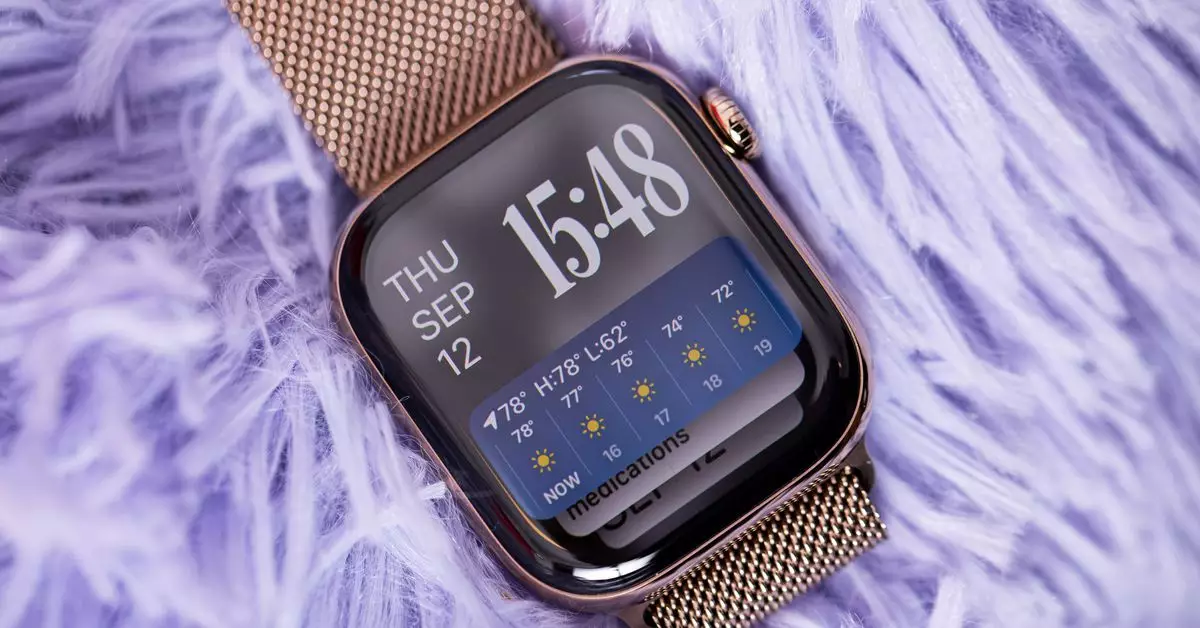The start of a new year often acts as a catalyst for many individuals to set ambitious goals, and for countless Americans, this frequently translates to commitments focused on health and fitness. With numerous devices flooding the market that claim to transform our lives, it becomes imperative to sift through the noise and find the options that genuinely enhance our fitness journey. The Apple Watch Series 10 has emerged as a notable contender in this landscape, especially with its recent discount offerings from major retailers. But is it the right choice for you, or should you consider other alternatives?
The Apple Watch Series 10 is not simply a minor iteration of its predecessors; although it comes with subtle improvements, it represents a careful evolution of the series. Priced starting at $329 for the 42mm model (with a $70 discount), it’s more accessible than ever, especially for those looking to make a health-related resolution come to fruition. The larger 46mm version, offered at $359, is also attracting attention, boasting the same reduction.
While hardcore athletes might seek alternatives boasting specialized fitness features, the convenience and integration offered by the Apple Watch within Apple’s ecosystem remain unparalleled. The Series 10 shines in casual fitness scenarios, making it an excellent entry point for users new to smartwatches or those upgrading from older models.
One significant upgrade within the Series 10 is the expansive wide-angle OLED display, which increases screen area by up to 30 percent. This remarkable enhancement not only improves visibility but also makes navigation seamless, particularly when trying to access app features during workouts. The watch is also lighter and slimmer, adding to the overall user experience.
In addition to physical improvements, the watch operates on watchOS 11, bringing noteworthy new functional capabilities. Features such as Training Load and Vitals aim to provide users with a more complete picture of their health by logging recovery metrics and training efforts. Although these features may not completely redefine the fitness tracking experience, they enhance the functionality that casual users will appreciate.
A standout improvement lies in the charging capabilities of the Series 10. The larger charging coil enables users to replenish their battery life from zero to 80 percent in just half an hour. This leap forward means less downtime and improved usability, making it a perfect companion for those with busy fitness schedules.
Additionally, the Series 10 leverages Apple’s vast range of third-party apps, making it a flexible and adaptable choice for users who enjoy customizing their fitness experience. From sleep tracking to high-intensity interval training, the array of available programs further enriches user engagement.
For users who may favor Android devices or prefer to explore alternatives, the Google Pixel Watch 3 is worth considering. Currently available at a competitive price of $299.99 (with a $50 discount), it presents itself as a solid contender against the Apple Watch. The Pixel Watch leverages Google’s integration of AI and health tracking features, offering users a unique blend of technology that appeals to both fitness enthusiasts and casual users alike.
While the Apple Watch maintains its position as a well-rounded device, the Pixel Watch provides distinct advantages, particularly for users invested in the Google ecosystem. From intuitive interface designs to smooth performance, it remains a strong option for those skeptical about migrating to Apple products.
As you embark on your fitness resolution journey, the choice between the Apple Watch Series 10 and its competitors should be centered on what features matter most to you. While the Series 10 boasts rich functionality and seamless integration, the Google Pixel Watch 3 provides a compelling alternative for Android users. Ultimately, the best choice will depend on your individual preferences, lifestyle, and the specific fitness aspirations driving your resolutions. With thoughtful consideration, you’ll be well-equipped to select a device that helps you achieve your goals in the coming year.

